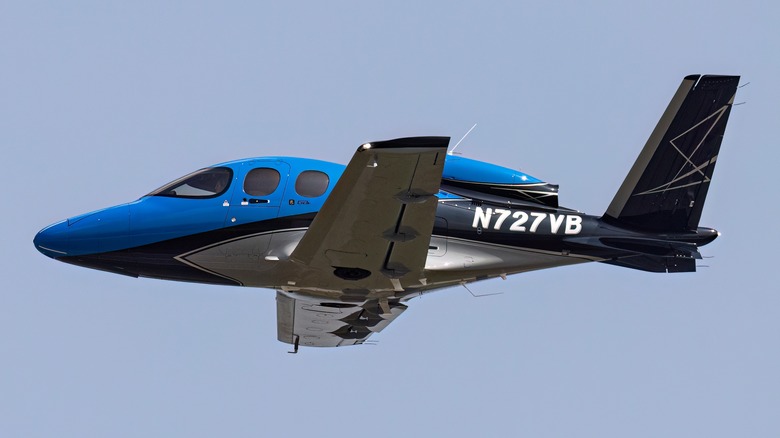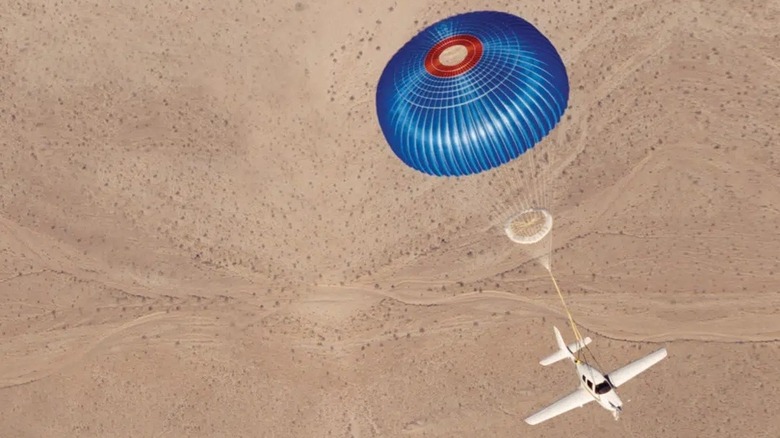The Genius Safety Feature That Separates Cirrus Aircraft From The Rest
The recent spate of air accidents globally has once again triggered doubts about the safety of air travel. Let's begin by dispelling these fears; statistically, flying remains the safest form of travel. This applies to both commercial and private aviation, although private flights are more dangerous than commercial ones. However, one private plane manufacturer has taken steps to readdress this balance with a simple yet genius safety feature. The device in question is a parachute for the plane that deploys when a plane is in trouble, gently floating the struggling craft back down to the safety of terra firma.
The company that introduced this safety feature is Cirrus, a Chinese-government-owned, American-based manufacturer of private planes. Cirrus produced its first kit plane in 1988. A decade later, it introduced the revolutionary whole-plane parachute system on all its aircraft. The Cirrus Airframe Parachute System (CAPS) remains the only such system installed as standard by any aircraft manufacturer, according to Cirrus.
Researchers at Wright State University concluded that CAPS is an effective safety system, with accident survival rates 13 times higher when CAPS was used compared to when it was not. The report also concluded that injuries were also much less severe and that the occurrence of post-crash fires was significantly reduced. Let's take a closer look at the system that has helped save the lives of 274 people in 136 deployments as of June 2025.
A rocket-powered life-saver
The CAPS system used on Cirrus aircraft is a whole-plane parachute system where the chute is attached to the airframe. It's a large ballistic parachute that is deployed by a rocket. CAPS is designed to ensure that the parachute always deploys, no matter the state of the aircraft. In other words, the parachute can activate whether the plane is inverted or in a spin, or at any altitude. However, as with any parachute system, deploying at higher altitudes increases the chances of survival. The latter point is ably demonstrated by the company's claims that no person has died when the system has been deployed at above 1,000 feet and with an airspeed of less than 200 knots.
A recent real-life example of an incident where the CAPS system saved a life occurred near Lafayette on June 12, 2025. In this instance, the pilot radioed Air Traffic Control to report that they'd lost oil pressure during cruise climb. A pilot listening in to the conversation jumped in to remind the pilot that their Cirrus aircraft had the CAPS system. The Cirrus pilot activated the system and, although the plane crashed into trees, the pilot survived without injury.
However, the system isn't infallible. There are instances where the system has failed to prevent a tragic outcome. These mostly occurred when the pilots activated CAPS at altitudes that were too low or speeds that were too fast. But while it isn't perfect, there are still 274 individuals who have Cirrus' CAPS system to thank for their survival.

